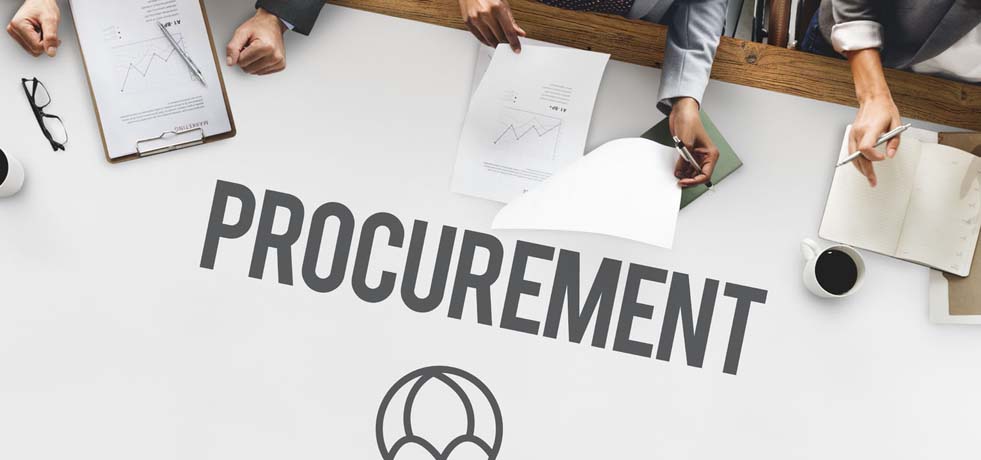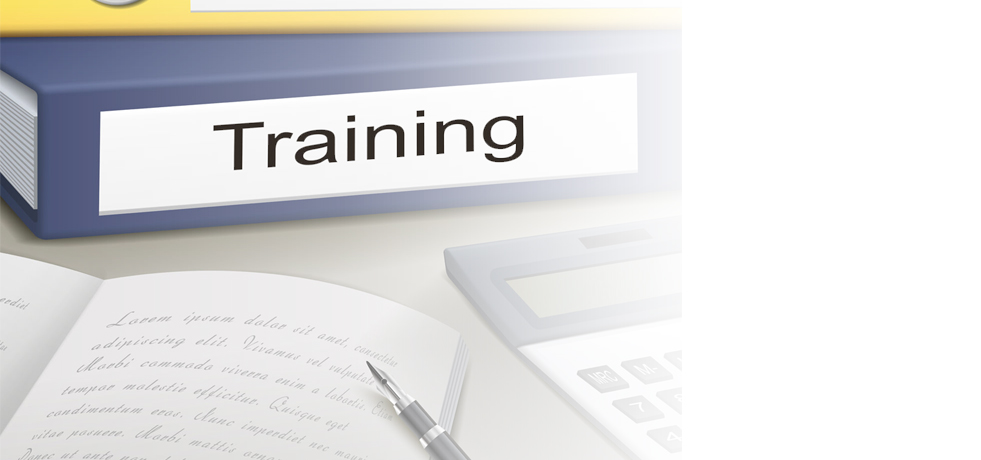A supply chain training program covering as much ground as possible and delivered from a pragmatic, (rather than theoretical) perspective is one of the best investments you can make to drive organisational improvement, but it’s not necessarily easy to put-together, execute, and maintain such a program.
Supply chain training programs can be complex and require a wide array of topical content, especially in today’s fast-moving global business environment.
To highlight just one example of how supply chain education is changing, it’s becoming widely recognised that ideally, basic supply chain education should be accessible to all company execs, managers, and employees (for companies with a supply chain), with only the more advanced training exclusively reserved for pure supply chain professionals.
Who Should Bookmark this Page?
One of the first steps in designing a supply chain training program is to identify exactly what topics and contents should be included, and for which categories of trainee/student. This in itself can be a daunting exercise, especially for larger companies. That’s why we thought this guide might be a helpful resource if you’re selecting content for a supply chain training program.
If you are a human resources manager, business leader, or even an individual professional looking to make sure your supply chain training program covers all the right areas, this serialised guide is for you.
Published in parts, this blog post will build up over the coming months into a comprehensive guide to the topics and disciplines that should make up your company’s (or your personal) supply chain training program.
So the very first thing you should do is bookmark this page. You’ll want to return to it on a regular basis to catch each new part as it is added.
What Can Be Learned From This Guide?
As our guide to supply chain training content grows, you’ll learn a little about all the important topics to include in your training programs.
These insights are more valuable than you might surmise, as many business leaders and HR managers aren’t aware of the breadth of operational knowledge that supply chain professionals should possess, or of which fundamentals can help non-supply-chain staff collaborate meaningfully with their supply chain colleagues.
As this guide unfolds, we’ll reveal all the elements of supply chain operation that should be present in a training program, broken down into categories covering everything from basic supply chain training for non-supply-chain staff, to advanced topics for your procurement, warehouse, transport, and logistics managers.
You will also discover what training content is essential for people at specific levels in your organisation, from the shop (or warehouse) floor, to those residing in the lofty heights of the C-suite.
Some Points to Note Before You Read On
We must stress that the focus of this guide is pragmatic (as in “not academic”) supply chain training. Many of your supply chain people, managers especially, will have received a wealth of academic education, the importance of which should not be underestimated.
However, when training for organisational improvement, theoretical comprehension takes second place to a working knowledge of practical supply chain management strategies, tactics, methods, techniques, tools, and models, the application of which will support and even drive tangible business-performance gains.
Another important point to note: While we’re discussing internal supply chain training, we’re not suggesting for a moment that all topics and content should be delivered by internal training resources. Indeed, the costs of internal training, both in terms of money and resources, would almost certainly be prohibitive.
We recommend that you combine internally delivered supply chain training with the services of a professional educational body—one which can offer the necessary topic coverage, supports learning through multiple channels, and can equip your workforce with practical, rather than academic supply chain and logistics-management wisdom.
Coming in Part 2…
Now you know what you can expect from our serialised guide to supply chain training content, so remember to visit this page again soon for the next installment.
In Part 2 we concentrate on introductory training-content for managers and staff from other functions such as sales, marketing and finance.
Part 2: Introductory Supply Chain Training (For Sales, Marketing, Finance Professionals)
It’s always difficult to know what to call professionals who don’t work in supply chain, so rightly or wrongly, for the purposes of this section, we’ll simply call them “non-supply chain professionals”.
The focus for this, Part 2 of our supply chain training content guide, is on sales, marketing and finance professionals at just about any level, with the objective of helping them understand how the supply chain works, how their activities influence supply chain performance, and vice versa.
That said, the supply chain training content recommended in this section could just as easily be used to introduce other professionals to supply chain fundamentals, so don’t feel you have to restrict supply chain familiarisation to sales, marketing, or finance people.

Supply Chain Training Content for a Practical Introduction
Since we’re talking about non-supply chain professionals, it’s not too important to make training overly technical. At the same time, you don’t want to overwhelm your delegates with too much theoretical content.
An ideal introductory training program will help non-supply chain pros understand how their roles impact the flow of materials, goods, information and money from one end of the chain to the other.
To do this, your program just needs to explain the key supply chain elements, ideally in a way that relates directly to your own organisation.
Introductory supply chain training content then, should answer the following questions:
- What is a supply chain?
- What are the parts (components) of a supply chain?
- Why is collaboration vital in today’s supply chains?
- What is a value chain and how does it relate to the supply chain?
- What is transport management and what are its objectives?
- How do warehouse and transport operations contribute to your company’s profitability?
- What is inventory management and why does it matter?
- What are the relationships between demand and sales forecasting and inventory management?
- What are the key cost and performance drivers in a supply chain operation?
- What is supply chain “cost-to-serve and why does it matter?
- What are the key benchmarks/performance measurements in supply chain management?
- What is sales and operations planning (S&OP) and what are its benefits to the overall business?
In addition to answering these questions, introductory supply chain training content should be constructed in a way that makes the answers relevant to sales, marketing, and finance people.
Making the Training Relevant
To ensure your training content is relevant, it should use real-world examples to explain why non-supply chain professionals need answers to the questions above.
For example, when discussing collaboration, training content should not only cover the importance of collaboration in the supply chain, but should also explain how your business will improve if supply chain and non-supply chain functions collaborate effectively.
One approach might be to show what can go wrong when sales promotions are launched without collaboration between sales, marketing, purchasing, and logistics teams, and conversely, how performance is improved when collaboration exists between these teams.
This is just one example of how introductory supply chain training might be made relevant to non-supply chain departments in your company. It can also be helpful to introduce some supply chain concepts such as “the bullwhip effect” to further highlight the interrelationships between sales, orders, inventory management and purchasing.
Speaking of Purchasing…
Unlike sales, marketing, or finance, a company’s procurement and purchasing function has a very direct interrelationship with other supply chain components. However that fact that isn’t always recognised as readily as it should be.
While purchasing pros hardly need an introduction to the supply chain then, it can be beneficial to use training to encourage tighter relationships between purchasing and logistics teams in particular.
We’ll take a look at this issue in Part 3 of our guide, and recommend some supply chain training content for procurement and purchasing teams—content such as supplier performance and relationship management, lean principles, and supply chain cost reduction.
Part 3: Supply Chain Training Content for Procurement and Purchasing Pros
Your company’s procurement department and purchasing teams play a vital part in the performance of your supply chain—a fact that demands attention when you formulate your training plans.
Purchasing teams aren’t always as aware as they should be of how profoundly their decisions and actions impact supply chain cost, efficiency and even service. With the right training though, this awareness can be heightened, paving the way for greater integration between purchasing and other supply chain functions.

In Part 2 of this guide, we covered introductory supply chain training, which is probably unnecessary for most purchasing professionals, as they will typically have a grasp of supply chain fundamentals.
Instead, it’s a good idea to focus training on concepts and disciplines that help purchasing teams contribute directly to supply chain performance improvement. In the following paragraphs, we’ll take a quick look at content to serve that purpose.
Key Targets for Procurement/Purchasing Supply Chain Training
To understand what content will best serve a supply chain training program for procurement and purchasing professionals, you need only to look at how and where purchasing makes the biggest impact on overall performance. Here are a couple of examples to consider:
Supplier relationships and performance: The relationship between buyer and supplier is critical to supply chain performance, and it’s the purchasing team that can make or break that relationship. That’s why no supply chain training package for purchasing professionals would be complete without a focus on buyer/supplier relationships and supplier performance management.
Supply chain cost reduction: When it comes to supply-chain costs, just about every business function you can think of has a part to play, not least the purchasing department.
Unit price is only a tiny part of the equation, and purchasers should be able to consider other supply chain expenses when sourcing suppliers, negotiating contracts/prices and placing purchase orders.
To help them in this, look for supply chain training content that covers cost reduction strategies and tactics. This will help them see how their activities impact cost performance and to become more comfortable with involvement in cross-functional improvement projects.
For example, the process-related costs involved in procurement and purchasing (such as the cost of processing a purchase order) are supply chain costs by their very nature, and functional processes are often ripe with opportunities to save money—and perhaps even manpower.
Training to Trim the Fat
One way to focus training on cost reduction is ensure it encourages lean thinking. A lot of companies take advantage of lean to some extent to reduce supply chain costs. More often than not though, the focus is predominantly on manufacturing and logistics processes.
However, among enterprises that have embraced the lean concept within their procurement and purchasing departments, many have unlocked significant savings, by eliminating waste and activities which add no value for the organisation.
As we’ll explore in later sections of this serialised guide, lean is a concept that can be applied throughout the supply chain. Still it must be noted here that lean-related content is seriously worth including in your procurement and purchasing training programs.
Beyond the Basics: Advanced Supply Chain Training Content
So far in this guide, we’ve covered introductory supply chain training content (suitable for non-supply chain professionals) and looked at a few less elementary topics which could benefit your purchasing department.
In Part 4, we’ll start exploring more advanced content for your training programs, by introducing some ideas to enhance skills and knowledge in your warehouse/DC workforce and management team.
Part 4: Intermediate and Advanced Training Content for Warehouse Teams

So far in our guide to supply chain training content, we’ve concentrated on introductory training for professionals engaged in other business areas, as well as slightly less basic supply chain training for procurement and purchasing staff.
It’s time to get a little more ambitious now, and think about supply chain training content for the warehouse team.
The following information assumes that your warehouse operatives, team leaders, and managers possess the knowledge necessary to do their jobs safely and proficiently, and that you would like to start developing them into a workforce that really embraces the integrated supply chain concept and actively plays a part in it.
The Shift from Warehouse-specific to Supply Chain Training
Supply chain training content for the warehouse is all about broadening horizons. Most companies concentrate on training warehouse people to be more skilled and knowledgeable warehouse people.
That’s all well and good, but for real organisational improvement you want staff in every supply chain component to be aware of the functional interrelationships which keep a supply chain running.
For your warehouse team, that means thinking beyond the parameters of their business unit, and actively seeking to serve their internal customers upstream and downstream in the supply chain. It should come as no surprise then, that customer service is one of the first topics we’d recommend you include in your warehouse training content.
Why Include Customer Service Content in Warehouse Training?
Customer service is rather an obvious training topic for managers and staff on the business front-line. But successful companies have known for some time that all employees contribute more to the business mission when they understand how their roles impact the customer experience.
This is especially true of the warehouse workforce, a group that is often left out of customer service training programs.
Of course a whole program of customer service training would probably constitute overkill, but it makes real sense to include some service-related content in your list of warehouse training essentials.
There are three very important reasons why it’s a mistake to ignore customer service in your warehouse training content:
- A warehouse operation will be improved greatly when each manager and operative recognises his/her colleagues as customers.
- Similarly, upstream and downstream supply chain components are also customers of your warehouse or distribution centre (DC).
- The warehouse operation and its performance has a very direct impact on the customer experience, even though the warehouse team may never see, or so much as speak to a customer.
As a minimum then, your warehouse supply chain training program should include content to raise awareness of the points above, and to promote a customer-centric culture throughout the warehouse or distribution centre.
What Else Should Be Included in Warehouse Supply Chain Training?
Aside from customer service content, an advanced supply chain training program requires the inclusion of a number of other topics. Some of these will be covered in Part 5 of this guide, and will help you develop your warehouse teams to contribute more proactively to overall supply chain performance.
Mostly we’ll be discussing content related to process improvement. That’s because DC process efficiency and cost-effectiveness makes a huge difference to supply chain performance.
But we’ll also include some other content suggestions, each intended to broaden the skills and perspectives of warehouse people, not just to turn them into highly skilled warehouse people (although it will do that too), but to transform them into more well-rounded supply chain professionals.
If you don’t want to miss what we have in store for you, remember to bookmark this page and check back soon for Part 5 of our guide to selecting supply chain training content.
Part 5: Supply Chain Training Content to Improve DC Processes
In Part 4, we recommended that you include customer service content in your supply chain training program for warehouse personnel. We’ll continue to look at advanced training for warehouse and distribution-centre teams now, but with the focus on content that will assist you in continuously improving processes.

Why is this considered to be advanced training?…
It’s because in most cases basic warehouse training (for operatives especially) tends to be centred on providing skills and knowledge to do one’s job adequately. If you want to get your DC or warehouse workforce focused on helping you improve the way things are done, training needs become a little more comprehensive.
What Should Your Content Include?
Depending on who you listen to, you might be advised to include one or more of the most common continuous improvement doctrines in your warehouse supply chain training content.
This of course is fine, but rather than becoming consumed with a single methodology such as lean or Six Sigma, why not choose some of the best tools from these and other doctrines to include in your program?
Here are a few examples of important continuous improvement tools and concepts that you might wish to cover in your training content:
- Waste elimination from the lean doctrine: help your warehouse people to understand and identify the seven wastes that handicap process performance. The wastes comprise time, inventory, motion, waiting, over-production, over-processing, and defects.
- DMAIC process from Six Sigma: You can involve your workforce in process improvement projects. This will be easier to do if your people are familiar with using DMAIC, a sequence of steps that involve defining, measuring, and analysing problems, identifying and implementing improvements, and then taking control to ensure those improvements are maintained.
- 5S methodology from “Just-in-time” manufacturing: 5S is a great way to focus your DC workforce on keeping work areas organised, which aids process efficiency.
- PDCA cycle used in Six Sigma and TQM: Plan, Do, Check, and Act—that’s the PDCA cycle. It’s similar to DMAIC, but driven less by data and more by collaborative visual discovery of process inefficiencies.
Extending Improvement Beyond the Warehouse
The above supply chain training content examples are just that—examples. There are many other tools and methodologies that you can introduce to your warehouse teams by including related content in your training program.
If you want to go a step further, and train some or all of your warehouse personnel (and managers) to contribute more extensively to supply chain improvement, you can broaden their knowledge horizons by adding appropriate training content such as…
- Basics of supplier relationships and their management
- Overview of purchasing process and practice
- Essentials of inventory management
- Content for introducing the integrated supply chain (could be similar to the content suggested for non-supply chain professionals in Part 2 of this serial)
Integration Through Education
It makes a lot of sense to encourage employees in all supply chain functions (including warehouse) to think of themselves as logistics professionals. This is so important if you want to break down organisational silos over time and develop a truly integrated supply chain.
We’ll continue to focus on this theme in Part 6 of our supply chain training content guide, where we’ll be introducing some content ideas for training your transport staff.
Part 6: Supply Chain Training Content for Truckers

This part of our guide will be of most interest to you if your company operates an in-house fleet of road vehicles, especially if it’s a distribution fleet and your drivers spend time in a customer-facing environment.
Presumably, your drivers come to you ready-qualified to drive the class of vehicles you operate, (or you might send them to a driving school) so this guide is not focused on that aspect of education.
Instead we’ll discuss what you might include in a training program to enhance non-driving skills among your workforce of road-warriors.
Expanding the Role of the Driver
Like the warehouse workforce discussed in Part 5 of our training-content guide, your drivers are in a position to actively improve performance in your supply chain.
Of course they can do this by being great drivers, sticking to the laws of the highways, and exercising efficiency in the non-driving tasks that they perform. However, education in other areas can help your drivers to become outstanding ambassadors for your enterprise.
So what training topics should you consider for up-skilling your drivers?…
If their job is to deliver to customers, then the first thing to think about will be how they can improve performance in that aspect of their duties.
Include Customer Service in Your Driver Training Programs
Customer service training can be really valuable for your drivers, for a growing number of reasons. Firstly, when drivers know how to make customers feel good about your company, the overall customer experience is enhanced.
Secondly, depending on your business model, your drivers may be the only people in your company to have regular face-to-face contact with your customers. Therefore, a driver’s approach to delivery-site activity and customer communication will strongly influence perception of your company as a customer-centric enterprise.
Thirdly, as mobile technology continues to transform the way customers behave and businesses operate, your drivers can be equipped to contribute to your enterprise in new ways, other than simply unloading and delivering customer orders.
For instance, with mobile apps connected to your backend IT systems, drivers can accept orders on the spot, gather and record feedback for your business, and even perform sales activities.
These tasks though, require customer-service skills that extend beyond the basics. By including customer service content in your driver training program, you can begin to transform your transport workforce and add a new channel for information and revenue.
More Skills-based Training for Drivers
In addition to customer service education, several other possibilities exist to use supply chain training content to broaden the capabilities of your van or truck drivers. Additional topics for your training program might include:
Health, safety, and manual-handling training: This can help to reduce accidents, protect your drivers from work-related injuries and decrease injury-related absenteeism.
Warehouse training: Basic warehouse training can enable you to deploy drivers temporarily to relieve labour shortages in your distribution centres.
Route planning and transport administration training: This helps drivers understand the effort going on behind the scenes and to be more collaborative in managing their workloads and schedules. If trained in planning systems and processes, drivers can also be used to cover absent office staff if the need arises.
Communication training can also be really valuable, because some drivers by their nature are used to solitude and may not be naturally strong communicators. Improving their communication skills will enable them to contribute more to your business, by interacting more effectively with customers, back-office staff, and managers.
What About Your Transport/Logistics Managers?
This section of our guide has concentrated very much on driver training, but if your company has an in-house transport operation, you doubtless have managers and administrative staff to consider too. In Part 7, we’ll put these people in the spotlight, and look at training content to help integrate your transport back office more closely with other supply chain functions.
Part 7: Supply Chain Training Content for Transport Staff

Training is widely recognised as one of the keys to supply chain integration, and if you want your transport back office to work more collaboratively with other functions, it’s worth spending the time to choose training content carefully, ensuring it covers more than the basics of transport management and administration.
In Part 5 of this guide, we looked at training content for the operatives in a transport operation. Now we’ll briefly explore what makes a good training program for those behind the scenes who keep the wheels turning—your transport administrators and managers.
The Transport Back-office Environment
In companies with in-house (as opposed to outsourced) transportation, the transport back office is a busy, sometimes even hectic environment.
Staff and managers alike are often very skilled in the technical aspects of transport operations, and know how to interact with a workforce that spends much of its time outside the confines of the distribution centre or transport depot.
Transport staff often spend quite a lot of time dealing with customers too, and unlike in some other functions, such as warehousing, customer service training is commonly included as standard in departmental training programs.
The Case for Internally Customised Training Content
Transport teams tend to be quite outwardly focused compared to those in other functions and as a result, may be less attuned to the need for internal collaboration.
Yet internal collaboration is exactly what’s required to drive improvements, not only in the supply chain operation overall, but also specifically to improve transportation effectiveness and efficiency.
That’s why your training content for transport staff and managers should include courses or modules focused on internal collaboration. This is content that you will probably need to develop internally (perhaps with help from external consultants), as there’s not a great deal of relevant material available “off the shelf” currently.
In any case it will be beneficial to create content that’s relevant to your company and targets improved collaboration between your transport department and the functions that share the closest interdependencies—some of which may be functions in external partner organisations.
Where to Target the Collaborative Focus
You’ll need to decide whether to develop content suitable for all transport personnel, or if it makes more sense to differentiate between content for leaders/managers and that created for other staff. This will depend to some degree on the size and structure of your transport team/s.
Think about the roles in the team and the part collaboration should play for each role. Consider the following transport staff roles:
- Transport manager
- General administrators
- Load and route planning specialists
- Schedulers/dispatchers
Do these roles all exist in your team? If they do, how should they ideally collaborate with other functions?
Can they all benefit equally from a single training-content package, or will content for say, route planners need to differ from that for managers or general administrators?
Are there other specialist roles you need to consider?
Answering these questions should help you come up with an outline for your transport-oriented supply chain training content, which you can then develop into a program, either using internal resources or by asking a training provider to develop the material for you.
Coming in Part 8
Hopefully you’ve stuck with us through all the stages of this supply chain training content guide. We’re nearly at the end now, although we may update and add to this series in the future.
Part 8 will be the final part, and will focus briefly on the selection of training content for senior supply chain leaders and executives, before closing out with a summary of the areas covered over the previous few months.
Part 8: Supply Chain Training Content for Execs
Hopefully this serialised guide has been helpful to you in planning or reviewing your company’s supply chain training content. This is the final installment, in which we’ll take a very brief look at executive training.
Historically speaking, corporate executives with a supply chain background have been a relatively rare sight in the C-Suite. Over time though, companies have increasingly begun to recognise the value of supply chain operations.
As a result, executive teams have begun to focus more on supply chain leadership, resulting in a growing number of appointments into positions such as Chief Supply Chain Officer. This trend effectively creates a double set of training content requirements.
Objectives for Executive Supply Chain Training
Firstly, your company might wish to offer some supply chain education for executives without a supply chain background.
Secondly, you may be interested in promoting supply chain leaders into executive positions. These individuals may well require training to aid a shift in perspective (from an operational view of the supply chain to one that’s more strategic).
Ideally then, your executive supply chain training program should be designed to meet all these objectives, and also structured in a way that helps execs from differing professional backgrounds to unify their approach to supply chain leadership.
Key Topics to Cover in Executive Supply Chain Training
In our experience of working with executives from hundreds of companies, a common set of strategic challenges—in which knowledge is lacking among leadership teams—appear time and time again. Hence it will make a lot of sense to build your program around content relating to these issues, which include:
- Supply chain performance measurement and benchmarking
- Cost-to-serve analysis
- Supply chain network performance and design
- Logistics outsourcing
- Sales and operations planning (S&OP)
- Supply chain strategy (and how to align it with business strategy)
- Supply chain cost reduction and process improvement
- Change leadership
These topics are relevant for any leader holding an executive office, regardless of his or her professional background. It may also be worth including some slightly more specialised content to familiarise specific officers with supply chain characteristics as relevant to their roles. For example:
- Supply chain and logistics technology for CIOs
- Freight rates and contracts for CFOs/CPOs
- Supplier relationships and supplier management for CPOs
- Supply chain collaboration and integration for CEOs
Ideally you should try to find training content that isn’t overly theoretical, but which instead presents case studies and examples of how strategic supply chain leadership can make a difference to the fortunes of an enterprise. Executives are busy people and the idea should be to provide them with knowledge that once absorbed, can be applied immediately to their work as individuals and as a team.
A Serial Guide to Supply Chain Training Content: Closing Summary
If you’ve been following our guide as each part has been published, you should have some great ideas by now for adding or revising the content of your company’s supply chain training programs.
Over the eight parts in which the guide has been posted on our blog, we’ve taken a look at the following training content areas:
- General introductory content for professionals in non-supply chain roles (to help them understand the interdependencies between business functions and how these impact the supply chain).
- Some slightly more in-depth supply chain training content for procurement and purchasing
- Advanced supply chain training content for warehouse staff and management teams, including content designed to support warehouse/DC process improvement.
- Training content for transportation staff and managers, with an emphasis on helping them to work more closely with other supply chain/non-supply chain functions.
- Supply chain training content for senior and executive leaders.
There’s every possibility that we’ll add-to or update this serialised guide in the future, so if you’ve enjoyed it and found it useful, please feel free to comment and let us know what further information you’d like to see included.
Similarly, we’d love to know about your training-program successes and any insights you’d like to share, especially if they relate to content selection for supply chain training courses and programs. Let’s keep spreading the word about supply chain education and why it matters to business longevity and success.



Hi. Need some suggestions..For a manufacturing company , what kind of learning tools can be used to train employees who are hired as fresher from engineering background or say with 2 -3 years of experience in supply chain management
You could look locally for classes or select one of the many online courses.